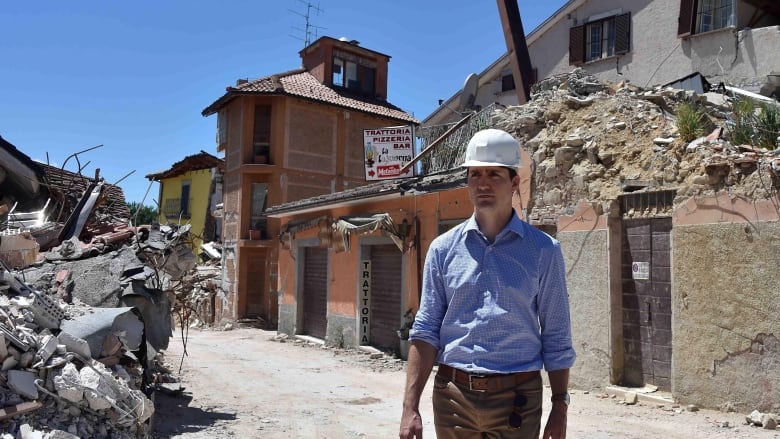
In an update Sunday regarding the devastation of post-tropical storm Fiona in the Atlantic provinces, federal officials confirmed that the Canadian Armed Forces (CAF) are already on the ground in several provinces to assist and are on their way to others.
The storm has caused huge amounts of damage across eastern provinces, with power lines down, homes smashed to pieces and at least two deaths reported.
“Homes have been destroyed and swept away, communities have been isolated and thousands of people are without power,” Anita Anand, Minister of National Defence, said in a press conference Sunday afternoon, adding that Nova Scotia, one of the hardest-hit regions, is her home province.
Around 100 CAF troops for each of Nova Scotia, Prince Edward Island, and Newfoundland and Labrador are being deployed or are already on the ground, assisting with cleanup efforts, she said, around three platoons per province.
This comes after requests for aid from provinces were approved today. Additional troops may be pulled to assist pending further information on the needs of provinces, she added.
“Protecting Canadians is obviously our top priority,” she said.
Their focus will be to help clear debris and help to reestablish the power grid to get communications and power back across the Atlantic provinces.
Dominic Leblanc, intergovernmental affairs minister, said in the update that the federal government will be working with provincial counterparts in the coming weeks to attempt to achieve some semblance of normalcy.
“The government of Canada stands ready to assist provinces in the cleanup and recovery efforts that will take place in the coming days and weeks,” he said.
He added that while Prime Minister Justin Trudeau has expressed a desire to be on the ground, he does not want to get in the way of cleanup, and is waiting for an “appropriate moment” when it will be “responsible for him to visit.”
When asked if the federal government would be assisting with financial aid for those whose homes and possessions were lost in the storm, Minister of Public Safety Bill Blair said that an existing disaster financial assistance arrangement that the federal government has with provinces will play a role.
Through this program, provinces can make requests for funds, but provinces have “the primary lead” on identifying those who need aid.
The federal government has not provided an exact dollar amount of funds to assist those devastated by the storm, instead announcing they would match donations made by Canadians to the Canadian Red Cross.
Blair stated that the Red Cross would be helping with the arrangement of interim housing for those who had lost their homes.
Gudie Hutchings, rural economic development minister, provided an update from Newfoundland and Labrador, saying that the death of a 73-year-old woman who was reportedly washed out to sea in the town of Port aux Basques, N.L., “shows the power of the water.”
“Living in coastal communities, we know what can happen, and tragically, the sea has taken another soul.”
She added that the level of devastation caused to property, including numerous homes being completely destroyed, will mean a long recovery for the province.
“We’re looking at a long time before we get some of this infrastructure replaced.”
On Prince Edward Island, communication remains a challenge, with MP Sean Casey noting that most of his information has been gathered by walking around on foot to speak to those affected.
It was largely a “wind event” in P.E.I., he said, and that meant a lot of downed power cables. One death on the island has been reported, and officials say that generator issues may have played a role.
“Last night, practically the entire island had no power,” he said, adding that some regions are slowly regaining that power.
Reconnecting to power and cell phones is going to be a challenge.”
In Nova Scotia, reports of serious injuries are minimal, according to Sean Fraser, Minister of Immigration, Refugees and Citizenship.
“Things on the ground at home are pretty rough through Nova Scotia and Cape Breton,” the representative of Central Nova said, adding that driving is impossible due to debris and power lines down on many streets.
He praised the resilience of Nova Scotians, saying that they are “showing what they’re made of.”
In his own community, a young boy was missing, and everyone came together to search for him, he said. The child was located safely.
Fraser added that he’s worried about harbour infrastructure and the damage done to farms.
Delivering an update on the Magdalen islands and Gaspe region in Quebec, National Revenue Minister Diane Lebouthillier also noted the need for better infrastructure to tackle the increased instances of extreme weather driven by the climate crisis.
“Obvious that we have to build infrastructure that is able to face the reality that we’re experiencing right now,” she said, adding that she spoke to a lobster fisher Sunday who told her, “I can’t imagine people who don’t believe in the climate crisis.”
Leblanc noted that long-term infrastructure is something the federal government is interested in investing in.
“I would certainly be open to looking at ways the government of Canada can strengthen the resiliency of that infrastructure,” he said.






